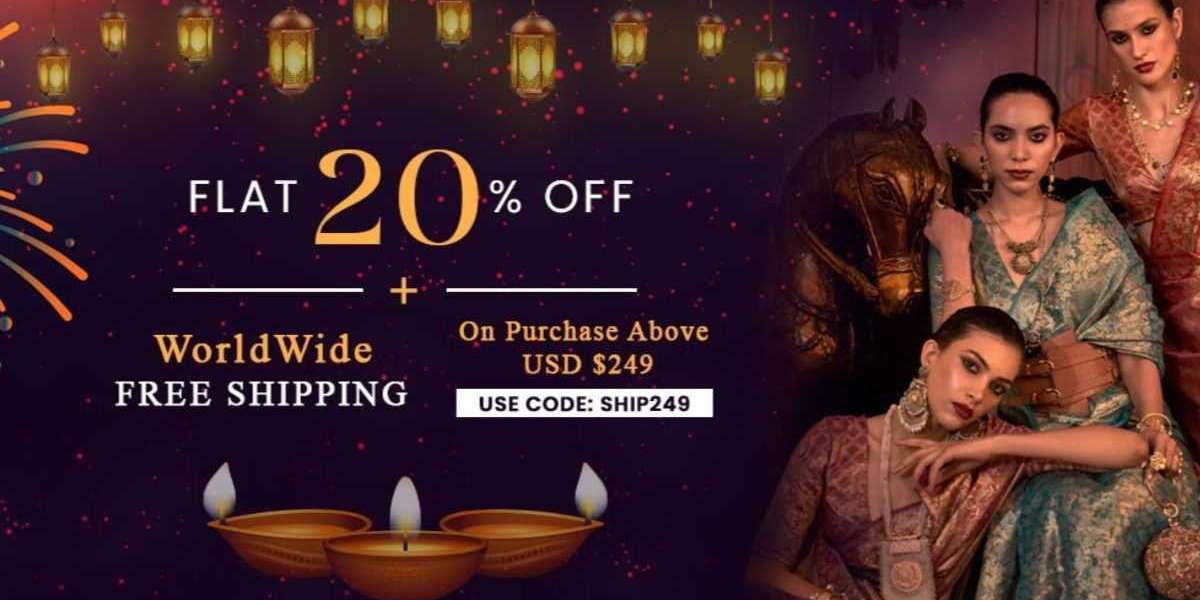Designer ethnic wear combines the rich heritage of traditional clothing with modern aesthetics, creating exquisite ensembles that resonate with cultural pride and contemporary fashion sensibilities. In today's diverse fashion landscape, ethnic wear has emerged as a symbol of elegance and sophistication, transcending geographical boundaries to captivate fashion enthusiasts worldwide.
The Cultural Significance of Ethnic Wear
Ethnic wear holds profound cultural significance, serving as a tangible expression of identity, heritage, and societal norms. Each garment is imbued with centuries-old traditions and craftsmanship, reflecting the unique cultural tapestry of its origin. Whether it's the vibrant hues of a saree or the intricate embroidery of a sherwani, every piece of ethnic wear narrates a story of artistic ingenuity and cultural heritage.
Evolution of Designer Ethnic Wear
Traditional Roots
Designer ethnic wear traces its origins to ancient civilizations, where clothing was not merely a means of covering the body but a form of artistic expression. From the elaborate drapes of the saree to the regal attire of kings and queens, traditional ethnic wear exemplified exquisite craftsmanship and attention to detail.
Influence of Fashion Industry
In recent decades, the fashion industry has played a pivotal role in reshaping the landscape of ethnic wear. Renowned designers have reinterpreted traditional silhouettes and embellishments, infusing them with contemporary flair to appeal to modern consumers. This fusion of tradition and innovation has propelled designer ethnic wear into the forefront of global fashion trends.
Types of Designer Ethnic Wear
Designer ethnic wear encompasses a diverse range of garments, each epitomizing the cultural heritage of its region. Some popular types include:
Sarees: Timeless and elegant, sarees are synonymous with Indian femininity and grace. From classic silk sarees to trendy designer creations, there is a myriad of options to suit every taste and occasion.
Salwar Kameez: A versatile ensemble consisting of a tunic (kameez), trousers (salwar), and a dupatta, the salwar kameez is favored for its comfort and elegance. Modern variations feature intricate embroideries and embellishments, making them perfect for festive celebrations and special events.
Lehenga Choli: Resplendent and glamorous, the lehenga choli is a quintessential bridal attire in many Indian cultures. With its voluminous skirt, fitted blouse, and embellished dupatta, it exudes opulence and grandeur, making it the epitome of traditional bridal couture.
Kurtis: A contemporary take on traditional Indian tunics, kurtis are favored for their simplicity and versatility. They can be paired with leggings, palazzos, or skirts, making them suitable for both casual and formal occasions.
Sherwanis: Exuding regal charm and sophistication, sherwanis are traditional attire for men, often worn during weddings and festive occasions. Modern interpretations feature luxurious fabrics and intricate embellishments, adding a touch of glamour to traditional menswear.
Regional Variations in Designer Ethnic Wear
The diversity of India is reflected in its myriad regional variations of ethnic wear. Each region boasts its unique textile traditions, embroidery techniques, and garment styles, resulting in a kaleidoscope of colors and patterns.
North India: Known for its opulent embroideries and luxurious fabrics, North Indian ethnic wear exudes royal elegance and grandeur. The vibrant colors and intricate motifs reflect the rich cultural heritage of states like Punjab, Rajasthan, and Uttar Pradesh.
South India: Characterized by its vibrant silk sarees and intricate temple designs, South Indian ethnic wear embodies timeless elegance and grace. States like Tamil Nadu, Karnataka, and Andhra Pradesh are renowned for their exquisite craftsmanship and traditional weaving techniques.
West India: With its vibrant mirror work and colorful bandhani prints, West Indian ethnic wear exudes a festive vibe and joie de vivre. Gujarat, Rajasthan, and Maharashtra are famous for their vibrant textiles and traditional embroidery styles.
East India: Home to rich handloom traditions and intricate kantha embroidery, East Indian ethnic wear epitomizes understated elegance and sophistication. States like West Bengal, Odisha, and Assam are renowned for their unique weaving techniques and traditional motifs.
Factors Driving the Popularity of Designer Ethnic Wear
The growing popularity of designer ethnic wear can be attributed to several factors:
Globalization: In an increasingly interconnected world, ethnic wear has transcended geographical boundaries, gaining popularity among fashion enthusiasts worldwide. The proliferation of online shopping platforms has made it easier for consumers to access a diverse range of ethnic wear designs from across the globe.
Celebrity Endorsements: Influential celebrities and fashion icons have played a crucial role in popularizing designer ethnic wear, often donning exquisite ensembles at red carpet events and social gatherings. Their sartorial choices serve as inspiration for millions of fashion-conscious individuals, driving demand for designer ethnic wear.
Fashion Events and Shows: Fashion events and shows provide a platform for designers to showcase their creativity and talent, exposing consumers to the latest trends and innovations in ethnic wear. Events like Lakme Fashion Week and India Couture Week serve as a melting pot of creativity, fostering collaboration between designers, artisans, and fashion enthusiasts.
Tips for Choosing the Perfect Designer Ethnic Wear
When selecting designer ethnic wear, it's essential to consider the following factors:
Body Type Considerations: Choose silhouettes and styles that complement your body type and accentuate your best features. For instance, A-line silhouettes are flattering for pear-shaped figures, while empire waistlines are ideal for apple-shaped bodies.
Occasion: Consider the nature of the event or occasion you'll be attending and select attire accordingly. For formal events like weddings and receptions, opt for embellished sarees or lehenga cholis, while casual gatherings may warrant lighter, more relaxed ensembles like kurtis or salwar kameez sets.
Fabric and Embellishments: Pay attention to the fabric and embellishments used in the garment, as they can significantly impact its overall look and feel. Luxurious fabrics like silk, chiffon, and velvet exude elegance and sophistication, while intricate embroideries and embellishments add a touch of glamour to the ensemble.
Maintenance and Care of Designer Ethnic Wear
Proper maintenance and care are essential to prolonging the lifespan of designer ethnic wear:
Storage Tips: Store your ethnic wear in a cool, dry place away from direct sunlight to prevent fading and discoloration. Use padded hangers for sarees and lehengas to maintain their shape, and avoid overcrowding your wardrobe to prevent wrinkles and creases.
Cleaning and Preservation: Follow the care instructions provided by the manufacturer to ensure proper cleaning and preservation of your ethnic wear. Dry clean delicate fabrics like silk and chiffon to avoid damage, and store them in breathable garment bags to protect them from dust and moisture.
Impact of Online Shopping on Designer Ethnic Wear Market
The advent of e-commerce has revolutionized the way consumers shop for designer ethnic wear, offering unparalleled convenience and accessibility. Online platforms provide a vast array of options to choose from, allowing consumers to explore different styles, designs, and price points from the comfort of their homes.
Sustainability in Designer Ethnic Wear Industry
As consumers become increasingly conscious of environmental and social issues, there is a growing demand for sustainable and ethically sourced ethnic wear. Many designers are embracing eco-friendly practices and ethical production methods, using organic fabrics, natural dyes, and traditional artisanal techniques to create environmentally responsible garments.
Visit Now - Sareeka
Conclusion
Designer ethnic wear is more than just clothing; it's a celebration of culture, craftsmanship, and creativity. With its timeless elegance and modern appeal, it continues to enchant fashion enthusiasts around the world, bridging the gap between tradition and innovation. Whether it's a classic silk saree or a contemporary fusion ensemble, designer ethnic wear allows individuals to express their unique style while honoring their cultural heritage.
FAQs
Is designer ethnic wear only suitable for special occasions?
- While designer ethnic wear is often worn during festive celebrations and special events, there are also many casual and semi-formal options available for everyday wear.
How can I ensure the perfect fit when buying designer ethnic wear online?
- To ensure the perfect fit when buying online, refer to the size charts provided by the retailer and consider taking accurate measurements of your body. Additionally, read customer reviews for insights into the garment's fit and quality.
Are designer ethnic wear garments expensive?
- Designer ethnic wear garments can vary widely in price depending on factors such as fabric, embellishments, and brand reputation. While some pieces may be more expensive, there are also affordable options available to suit every budget.
What are some popular accessories to pair with designer ethnic wear?
- Popular accessories to pair with designer ethnic wear include statement jewelry, embellished clutches, embroidered footwear, and intricately designed hair accessories.
How can I maintain the vibrancy of my designer ethnic wear over time?
- To maintain the vibrancy of your ethnic wear, follow the care instructions provided by the manufacturer, avoid exposure to direct sunlight, and store garments properly in breathable garment bags or covers.








